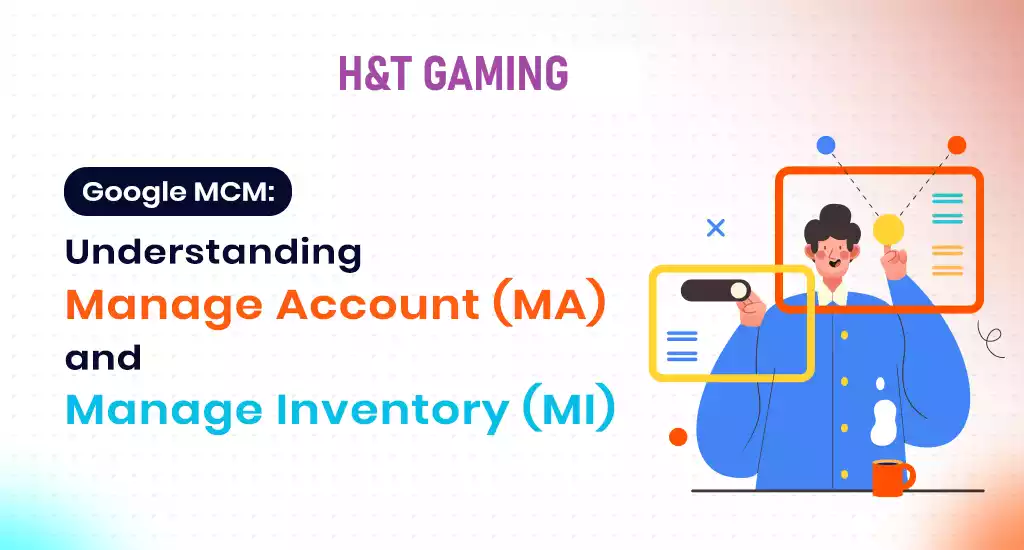
Difference between Google ADX MA and MI Account (2024)
For publishers seeking to maximize their ad revenue through Google’s AdX platform, understanding the {difference between Google ADX MA and MI Account} is crucial. Both Managed Account (MA) and Manage Inventory (MI) options offer access to AdX’s vast pool of advertisers, but they differ significantly in control, responsibility, and revenue management. This comprehensive guide will shed light on these distinctions, empowering you to make an informed decision for your publishing business.
A Glimpse into Google AdX
Before diving into the specifics of MA and MI accounts, let’s establish a foundational understanding of Google AdX. As a programmatic advertising exchange, AdX connects publishers with a global network of advertisers vying for ad space on your website or app. This real-time auction system ensures you receive competitive bids for your inventory, potentially leading to higher ad revenue compared to traditional ad networks.
However, gaining direct access to AdX can be challenging. Stringent requirements regarding website traffic and content quality are often in place. This is where Managed Accounts (MA) and Manage Inventory (MI) partnerships come into play.
Managed Account (MA): Partnering for Success
A Managed Account grants control of your AdX inventory to a certified partner, often referred to as a Multiple Customer Management (MCM) partner. This partner takes on the responsibility of managing your AdX account, including:
- Demand Setting: Negotiating deals with advertisers and setting up programmatic campaigns to ensure optimal ad fill rates.
- Campaign Optimization: Continuously monitoring and refining campaigns to maximize click-through rates (CTR) and revenue.
- Reporting and Analytics: Providing comprehensive reports on campaign performance, allowing you to track progress and identify areas for improvement.
Essentially, the MCM partner acts as an extension of your team, leveraging their expertise and connections to navigate the complexities of AdX.
Benefits of an MA Account:
- Reduced workload: Offload the day-to-day management of AdX to a qualified partner.
- Increased Revenue: MCM partners have access to premium demand sources, potentially leading to higher CPMs (cost per mille) and overall ad revenue.
- Expert Guidance: Benefit from the knowledge and experience of a dedicated team specializing in AdX optimization.
Drawbacks of an MA Account:
- Loss of Control: You relinquish direct control over your AdX settings and campaign strategies.
- Revenue Sharing: Revenue generated through your ad inventory is shared between you and the MCM partner.
- Partner Reliance: The success of your AdX monetization hinges on the expertise and performance of your chosen partner.
Manage Inventory (MI): Maintaining Control
Under a Manage Inventory (MI) arrangement, you retain control of your AdX account. However, the MCM partner manages specific, pre-defined portions of your inventory within their own account. This allows you to:
- Maintain Control: You decide which ad units and placements are managed by the MCM partner.
- Direct Revenue: All revenue generated from the managed inventory sections goes directly to you.
- Test and Compare: You can compare the performance of MCM-managed sections with those you manage yourself.
Benefits of an MI Account:
- Flexibility: Maintain control over key aspects of your AdX account.
- Direct Revenue Capture: Keep all ad revenue generated from the managed sections.
- Benchmarking: Compare your own AdX management skills with the performance of the MCM partner.
Drawbacks of an MI Account:
- Increased workload: Requires greater involvement in managing your AdX account.
- Limited Expertise: You may lack the in-depth knowledge and experience needed for optimal AdX performance.
- Lower Revenue Potential: Without access to the full range of MCM partner demand sources, you might see lower CPMs and overall ad revenue.
Choosing Between MA and MI Accounts
The ideal choice between MA and MI accounts depends on your specific needs and resources. Here’s a breakdown to help you decide:
MA is a good fit for:
- Publishers with limited time or expertise in programmatic advertising.
- Websites or apps experiencing low ad fill rates.
- Businesses seeking to maximize ad revenue potential.
MI is a good fit for:
- Publishers comfortable managing aspects of their AdX account.
- Businesses with specific goals for certain sections of their ad inventory.
- Entities wanting to benchmark their own AdX skills against external expertise.
Crafting Your Ideal Partnership
Whether you choose an MA or MI account, meticulous partner selection is paramount. Look for MCM partners with a proven track record in your industry and a transparent fee structure. A strong working relationship founded on open communication is essential for maximizing the success of your AdX monetization strategy.
Frequently Asked Questions (FAQs)
Q: Are there any eligibility requirements for MA and MI accounts?
A: Yes, both MA and MI accounts require publishers to meet specific criteria. These typically involve minimum monthly impressions, website traffic volume, and content quality standards set by Google.
Q: What are the typical fees associated with MA and MI partnerships?
A: MCM partners generally charge a percentage of the ad revenue generated through your managed inventory. This percentage can vary depending on the partner’s expertise, the value they bring, and the specific terms of your agreement.
Q: Can I switch between MA and MI accounts at any time?
A: Yes, transitioning between MA and MI accounts is usually possible. However, there might be contractual obligations with your MCM partner that need to be addressed before making a switch.
Q: How can I measure the success of my MA or MI partnership?
A: Closely monitor key performance indicators (KPIs) like ad fill rate, click-through rate (CTR), and cost per mille (CPM). Regularly review reports provided by your MCM partner and compare them to your previous performance or those sections you manage yourself (in the case of MI).
Q: Are there any alternatives to MA and MI accounts for accessing AdX?
A: For publishers who don’t meet the direct access requirements, some MCM partners offer a “reseller” model. This involves the partner buying ad inventory in bulk and then reselling it to publishers at a premium. However, this approach often leads to lower CPMs compared to MA or MI arrangements.
Conclusion
By understanding the {difference between Google ADX MA and MI Account}, you can make an informed decision that aligns with your publishing goals and resources. Carefully consider your workload capacity, desired level of control, and revenue expectations when choosing between these two options. Remember, a successful partnership with a qualified MCM partner can significantly boost your ad revenue and streamline your programmatic advertising efforts.
Looking for Google ADx: Get In Touch








